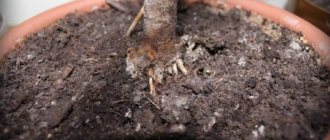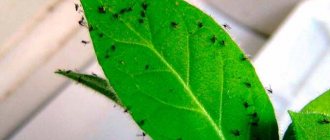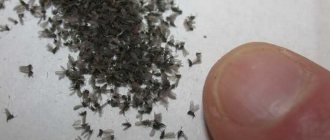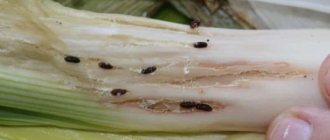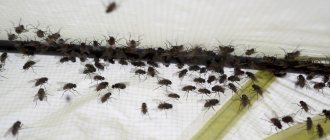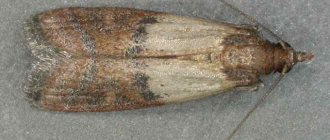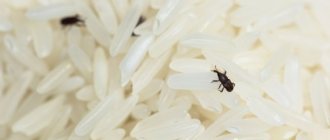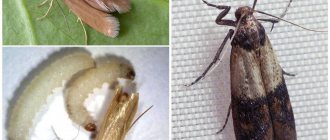Various pests strive to live next to humans: these are cockroaches, bedbugs, moths, and ants. This list can also include midges - small insects of the Diptera family. Science knows more than 1000 varieties of midges. There are black and green midges, whiteflies, and thrips. The flower midge is a pest of indoor plants; there is also a species that annoys animals; house flies living in apartments bite, spreading dangerous infections, especially when biting in the eye. And given the fact that, unlike mosquitoes, they swarm in a whole cloud, an insect attack can have very negative consequences.
About house midges
Midges can appear even in the apartment of the cleanest housewife. So one of its very common representatives are Drosophila - these are small insects, about 2 mm, that live in spoiled fruits or vegetables. It is with these products, purchased at the market or in a store, that pests most often enter the house. Drosophila do not pose a particular danger to humans, but they become one of the main enemies of garden and vegetable fruits. The appearance of such midges in flower pots with orchids and other plants is evidence of excessive watering of the flower.
The question of whether midges bite is puzzled by those who once discovered various kinds of rashes on the skin, accompanied by itching, burning, pain and swelling. It may seem strange to many, but there are also midges that can bite.
However, pests do not bite at night, as bed bugs do, but are active during the daytime. That's why they don't start in bed or bed.
Biting midges prefer damp places in the apartment, therefore, accumulations of adult individuals can often be found in the drain holes of sinks, as well as in the soil of indoor plants. They can enter the room through the ventilation system or fly in through a window from the street.
Black midges are much larger than fruit flies, their body length reaches up to 6 mm. Outwardly, they are very similar to flies; they can be house flies or earth flies. Pests do not dig into the skin with their stings like other insects, but gnaw out a piece of flesh, in place of which small wounds form. During an attack, the biting midge injects an anesthetic liquid. That is why the pain from a bite is not felt immediately, but after some time.
Saliva that gets into the wound often causes an allergic reaction. Multiple bites made by biting midges may be accompanied by fever, rapid heartbeat and enlarged lymph nodes.
What to do
Most likely, specialized treatment will not be needed. However, if you experience unbearable pain and severe itching, you can try the following natural remedies to relieve swelling from a midge bite.
Rinse thoroughly
It is important to wash the area well with soap and water to avoid bacterial infection or, worse, Morgellons syndrome. Dry with blotting movements without rubbing.
Biting midges have four sharp blades in their mouths that tear the skin, leaving a small open wound susceptible to infection.
After thoroughly cleansing your skin, apply an antiseptic.
Apply apple cider vinegar
Vinegar is a popular natural home remedy that is used for a variety of purposes. It will help reduce swelling, pain, and redness. Soak a cotton swab in a little vinegar (1 part water to 1 part vinegar) and gently apply it to the area until it starts to feel better.
Apply a cold compress
If a midge bite causes swelling and unbearable itching, you may find some relief by applying a cold compress. Add some ice to a damp cloth and place it on the wound. Keep it on the affected area for at least 15 minutes.
The cooling sensation will reduce swelling, numbness of the skin, and relieve itching. Do not apply ice directly to the skin or leave the compress on for more than 20 minutes.
Use anti-itch cream
There are a huge number of pencils, sprays, balms that relieve itching, burning, and pain. Over-the-counter creams such as Cortizone-10 contain hydrocortisone.
Hydrocortisone is a chemical compound that temporarily relieves the itching associated with insect bites. Many creams contain aloe, which helps soothe and moisturize the skin.
Essential oils
Essential oils are an excellent treatment for insect bites. With a few drops you can quickly get rid of swelling and itching. Some will help prevent infection.
The best essential oils for midge bites:
- Lavender;
- Lemon balm;
- Tea tree;
- Chamomile;
- Thyme;
- Mint;
- Eucalyptus.
It is important to remember that oils are extremely effective and should never be applied directly to the skin. Before using, you need to make sure you dilute it with a quality carrier oil such as coconut, jojoba, almond
They are great for repelling midges, midges, and other annoying pests.
Take aspirin
Aspirin is a treatment that reduces inflammation associated with midge bites and also helps reduce swelling and itching. Use the back of a spoon to crush the aspirin and mix it with a little water to form a paste. Apply the paste to the injury site and leave for ten minutes.
Take a cold shower
If you're dealing with multiple bites, taking a cold shower for ten minutes will help you feel better. Cold water reduces swelling from midges and other insects.
Soda
Baking soda will help relieve pain after an insect attack. Its solution can reduce swelling of the eyes (1 tsp per glass of water).
Parsley
To prevent your eyelid from itching, you can use parsley juice. A piece of gauze soaked in it is applied to the eyes for several minutes. Such lotions relieve itching, swelling and swelling, and also improve vision due to the high content of vitamin A.
Plantain, mint, parsley and soda
Plantain and mint
Effectively relieves inflammation of the eye and relieves swelling. To do this, the leaves of the plant are washed with cool water, slightly crushed and applied to the affected area. Mint has similar properties. Thanks to its antibacterial effect, it removes swelling and protects the eyes from infection.
Cold
Treatment of edema often begins with the use of cold compresses. By applying ice wrapped in a cloth to your eye, you can quickly get rid of the discomfort.
Potato
The consequences of a bite can also be relieved with the help of raw potatoes. It is enough to cut it lengthwise and apply it to the bitten eyelid. After several such procedures, the swelling of the eye will decrease significantly.
Knowing how to relieve swelling of the eyelid when bitten by a midge, you can provide timely assistance to the victim
You should not postpone a visit to the doctor if your health has worsened. This is especially important for children, since their body’s immune defense is much weaker than that of adults. If a child gets a midge in his eye, he should consult a specialist as soon as possible.
How to deal with biting midges in an apartment
Fighting midges at home
- Biting midges will not annoy apartment dwellers if you do not leave unsanitary conditions in the kitchen overnight: food on the table, dirty dishes in the sink, and waste in the trash can. After all, it is the smell of rot that attracts the attention of insects.
- In the kitchen, you should sort through and get rid of dirty bags and containers in which food was previously stored. It is advisable to treat the internal and external surfaces of cabinets with a vinegar solution, since midges are very afraid of its smell.
- Biting pests will not be able to fly into the apartment through the window or enter the room through the ventilation if they are protected by mosquito nets.
- If necessary, drain pipes under the kitchen sink should be cleaned, as food debris and moisture are the most favorable conditions for the spread of green midges.
- It is necessary to pay attention to indoor plants by adjusting their watering. You should also periodically loosen the soil and use drainage.
- Sticky tapes and traps that hang in places where they accumulate will help clean your apartment from biting midges.
- Pet cages also require regular cleaning. There is no need to leave stale fruits and vegetables in it.
- To prevent the midge from biting, you can catch it with a vacuum cleaner, subsequently cleaning the dust container outside.
- Folk remedies that have a pronounced aroma are also used against biting midges, which are usually found in every apartment. These can be garlic, horseradish, orange or clove sticks.
23.05.2019
How to get rid of midges that bite? - every housewife has asked this question at least once. Midges themselves are very small and difficult to detect immediately. But when they begin to bring discomfort into a person’s life, they should be gotten rid of immediately. Now there are enough chemicals and various methods with which it is easy to get rid of them.
A small insect can bite a person painfully
Reasons for appearance
The fruit is just starting to deteriorate, and the insects are right there. Where do fruit midges come from when the rotting process begins:
- from kitchen trash cans, where they live in plant debris;
- from bathrooms with forgotten wet rags;
- from places where pets are located if their hygiene is not observed;
- from flower pots, over-watered, with rotting roots;
- from ventilation systems if neighbors violate sanitary standards;
- from the basement.
They multiply en masse in such places, waiting for the opportune moment of decomposition of plant tissue to occupy the fruit. But, let’s say, the apartment is in perfect order and everything is fine with ventilation, but if you forget the damaged object on the table, the insects appear.
How do midges form on fruit in this case? This is explained by the peculiarities of their reproduction process. Drosdophila is constantly engaged in laying eggs, which are not visible to the human eye due to their microscopic size. She does this on a still whole, healthy fruit.
As soon as it begins to rot, the process of reproduction of individuals begins, which occurs very quickly (in 24 hours) and begins exclusively with putrefactive changes. The rest of the midges that live nearby join in on the “feast” and lay new eggs, increasing their numbers.
Biting midges and methods of dealing with them
Midges belong to the family of dipterous insects. They reach about 6 millimeters in size. Outwardly they are very similar to flies, only smaller in size. The lifespan of these insects is no more than 1 month. Some midges cause harm to the human body. They carry various types of diseases. Their bite is much more painful and harmful than a mosquito bite, since the midge damages the surface of the skin. A person scratching a bite site can contract a disease such as simulidotoxicosis. These insects prefer damp places, so clusters of midges can be found in drains, sinks, and in the soil of indoor plants. They can appear in an apartment by flying through a window from the street or climbing up an exhaust pipe.
Blood-sucking bugs
Blood-sucking bedbugs are the only insects listed here that literally live in beds, sofas, bedding, and the folds of mattresses and pillows.
- The size of bedbugs most often varies between 5–7 millimeters, the bodies of females are rounded, those of males are more elongated, the color is brown, copper, or reddish-brown.
- The larvae look like smaller versions of adult bedbugs, but are lighter in color and smaller in size.
- Bed bugs leave behind a brown, corrosive dirt that is easy to find in places where insects accumulate.
- Bite marks look like swollen red dots, which always appear in several pieces and line up in a chain.
- When bugs puncture the skin, they inject an anesthetic into it, so the moment of the bite may not be felt; in larvae, this body system is underdeveloped, so their bites, on the contrary, can be painful.
Fleas
A person can be bitten by several types of fleas
and all of them are carriers of parasites and various diseases, from helminthiases to plague, borreliosis and various types of typhus.
- The size of fleas living in the Central region of Russia usually varies between 0.5–3 millimeters, so the insects look mostly like dark moving dots.
- A flea bite always feels like a sharp, burning pain at the site of the skin puncture.
- A small, hard, dried drop of blood may remain at the site of the bite.
- Insects are not particularly scrupulous in choosing a place on the body to feed on, so they can bite in any open areas of the skin.
- The flea bite begins to itch instantly and itch severely for several days.
Fleas do not tend to gather en masse to nest in a specific place, so they can live scatteredly anywhere in the house, not necessarily in or near the bed. If you suspect that it is fleas that are biting you, they live throughout the room.
Helpful advice
Lice
provoke the development of pediculosis and can be carriers of typhus and relapsing fever.
- Depending on the type of lice, the length of their light, oblong or round bodies can range from 1 to 4 millimeters.
- Most lice live directly on a person and constantly feed on his blood; body lice can live in things or a room, but not very far from the food source - a person.
- Lice bites are not felt, but after some time, which depends on the individual characteristics of the body, they begin to itch.
- If there are a large number of pests, their bites may merge into single red spots on the skin and become covered with a white flaky crust.
If you suspect that there are lice at home, you should start looking for them not from the bed or room, but from your own body. Insects can live on the head, eyebrows, mustache, armpits, groin, any place where hair is longer than 2-3 millimeters. Body lice can also be found on fleecy fabrics, which are similar in structure to hair.
Midges
Midges in the house can be understood as pests that, according to the official scientific classification, belong to this family
, and in general small flying insects, the species of which cannot be determined by eye.
- Carnivorous midges can either tear out pieces of skin and feed on them, or drink blood.
- The skin reaction to a midge bite can be different and depends on the type of parasite; sometimes it can be a rounded red micro-abrasion that does not cause any sensation, sometimes it can be intense redness, itching and swelling of the skin several centimeters in diameter around the site of damage.
- , the bite of midges
in the Central region of Russia is not felt by humans. - You don’t need to look specifically for midges; if they are found in your home, you can easily notice them swarming or flying near the food that interests them.
Not all midges bite; many of them feed on indoor plants, microflora growing in damp places at home, your food and pet food. These types of midges can and should also be combated.
Recommended Links
Experts' opinion
Based on the results of clinical studies, La-Cri products, including cream for sensitive skin, are recommended by the St. Petersburg branch of the Union of Pediatricians of Russia. The effectiveness, safety and tolerability of the products have been proven by a clinical study. The cream is also suitable for daily skin care of children with mild to moderate forms of atopic dermatitis and during remission, accompanied by a decrease in the quality of life of patients. As a result of therapy, a decrease in the activity of the inflammatory process, a decrease in dryness, itching and flaking was noted.
It has been clinically proven that La Cree cream for sensitive skin reduces itching and irritation, relieves skin redness, moisturizes and gently cares for the skin.
Mosquitoes
Mosquitoes are a whole family of insects that feed on blood. They can enter your home through open windows and vents, through ventilation or drainage systems and are one of the most common pests in the warm season.
- Mosquitoes have dark gray bodies, up to 1 centimeter in length, and transparent wings located parallel to the body.
- Insects emit a characteristic monotonous squeak during flight, which is easy to hear if the parasite is hovering around your head.
- Mosquito bites are sometimes felt, sometimes not, it all depends on the individual sensitivity of the skin and where your attention is directed - most often, if people are passionate or busy with something, the moment of the bite goes unnoticed.
- The bite itself looks like redness that is dense to the touch, itches, and sometimes there is a small swelling around it, but in most cases it goes away after 1–4 hours.
Mosquitoes breed in water and places with high humidity, so they cannot literally live in your bed, however, it is more convenient for them to feed on your blood precisely while you are sleeping, so bites are often discovered in the morning.
Treatment of bites
First of all, before going for a walk in nature, you should always have rubbing alcohol on hand. The bitten area must be wiped with a cotton swab soaked in the preparation. Painful sensations will become much less, and unpleasant consequences appear extremely rarely.
If an incident involving an insect attack occurs close to home, regular ice will help reduce pain and burning. Place it in a clean cloth and press it onto the affected area of the body. You can simply wipe the reddened area with an ice cube.
The following folk remedies cope well with redness and burning after a bite:
- cologne;
- fresh lemon juice;
- paste of parsley leaves;
- table vinegar;
- concentrated solution of soda in water.
If you don’t have any remedies suitable for relieving painful sensations on hand, you can grate new potatoes and apply a compress to the affected area. Traditional medicine also advises applying chopped onions; it will do an excellent job of itching and burning.
If none of the methods help, there is no other option than to seek medical help. You especially shouldn’t delay it if alarming symptoms appear:
- dizziness;
- fainting;
- severe swelling;
- discharge of cloudy fluid from wounds.
Cockroaches
Cockroaches may begin to bite if their population in the house lacks other food or it is out of reach, or if they have already become accustomed to feeding on human and animal tissue elsewhere and then crawled to you. In practice, this rarely happens yet, but you cannot completely exclude the possibility that it is cockroaches that bite you in bed.
- The sizes depend on the type of cockroaches
, their gender and stage of development; they can be from 1.5 to 6 centimeters in length, on average about 2.5–4 centimeters. - The color can be red, black, brown, copper or brown.
- When a cockroach bites, it tries to tear off a piece of skin from you, so the marks of these attempts look like superficial, ragged abrasions of any shape.
- Sometimes a cockroach does not have enough strength to tear off that piece of skin that it has coveted, then a piece of it remains next to the wound and gradually dries out.
- If you have sensitive skin, dark spots similar to bruises may occur at the site of the bites.
If your bites fit the description of cockroach bites, carefully inspect the entire room where you sleep, as well as the kitchen and bathroom. If you have cockroaches, you are likely to find them when examining them in dark and damp areas of the apartment.
Recommended Links
What are the dangers of skin lesions and how to treat them?
If the bite is treated incorrectly and untimely, the following complications arise:
- allergies (the appearance of a rash, nausea, weakness, fever - signs of such a reaction);
- inflammation of wounds (severe itching provokes scratching, and if infected, the damaged area festers);
- loss of vision (if bites in the eye area are treated incorrectly, there is a risk of vision loss).
To prevent complications, measures must be taken immediately. Immediately after discovering a bite you should:
- Wash the wound with water and laundry soap. You should not use other soapy products (gels, shampoos), as this may contribute to the development of allergies.
- Blot excess water with a napkin.
- Treat the wound with an antiseptic (Furacilin, Chlorhexidine).
- If the pain is intense, take a painkiller and an antihistamine (Paracetamol, Claritin, Suprastin, Tavegil).
- Cool the bite area with ice.
On a note. Netizens who have encountered a similar problem recommend applying Zvezdochka balm to the damaged area.
If the bite occurs in the eye area, you must:
- Rinse the damaged area with cold water.
- Relieve swelling with a special ointment, for example, Fenistil Gel.
- Cool it with a compress.
- You should consult a doctor as bites in the eye area are especially dangerous.
Hives
The harmless urticaria butterfly has nothing to do with it; we are talking about one of the types of dermatitis, whose manifestations are easily confused with insect bites. Urticaria is characterized by red, itchy blisters that resemble nettle burns, which is where it gets its name. Most often, the disease is of an allergic nature, but blisters can appear without an obvious reason one at a time, several at a time, or en masse at once.
The main difference that allows us to distinguish this form of dermatosis from insect bites is that urticaria leaves blisters with a uniform surface; there is no visible point where the bite was made. It may be difficult to see with the naked eye, but a magnifying glass and phone camera can help you enlarge the blisters to the required size and thus more accurately determine their origin.
Carefully!
general description
Midges are small winged insects that resemble small flies. Their bites are very painful and unpleasant. In search of food, midges do not disdain either human or animal blood. They do not bite immediately; they can crawl around the body for a long time in search of a more convenient place.
Neither thick clothing nor thick wool can save you from annoying insects. In the south, midges can cause a serious disease - onchocerciasis, since they sometimes carry small worm larvae and infect humans through bites.
Animals can also suffer from bites - numerous wounds cause severe pain. Sometimes livestock diseases with simulidotoxicosis occur, and midges are most often the cause of the epidemic.
Most often, in order to avoid insect attacks, protective equipment is used. You can buy special medications in pharmacies, but traditional medicine also recommends effective recipes and advice.
Insect bites
How to get rid of insects in bed?
To get rid of insects in bed:
- Unfold the sofa or bed, take out all the things from the drawers, remove the bedding.
- Carefully inspect each element separately for the presence of insects or traces of vital activity; it is most convenient to do this in daylight and using a flashlight.
- If you find pests, eggs or other signs of presence, take a vacuum cleaner with an empty dust bag and collect them, then remove the bag from the vacuum cleaner and dispose of it immediately.
The frame of a sofa or bed, storage boxes, slatted bottom and other structural parts of the sleeping place can be treated with insecticides in ready-made form against the type of pests that have settled in your home. Tools such as:
- Clean house
- Varan
- Combat SuperSpray
- Super cobra
- Dr. Klaus universal
- August Insecta
- Medilis-Superpower
- Raptor 17 types of insects
- Ra >
Use any product according to the instructions for its use. When handling, wear closed clothing, rubber gloves and a respirator to protect your respiratory tract.
Carefully!
To clean bedding or individual items from insects and traces of their presence:
- Place the item in a plastic bag, seal it tightly and place it in the freezer of a refrigerator at a temperature not lower than –15°C for 5–7 days.
- After the specified time has passed, remove the item, shake it over the bathtub, remove insect remains if there are any, and wash as usual.
- After washing, a clean item must be ironed at the maximum permissible temperature for additional disinfection.
Unfortunately, it is not always possible or advisable to clean bedding and accessories. If the dirt has become ingrained, if possible, throw away the damaged item and replace it with a new one.
All these instructions apply specifically to those cases when insects literally live in your bed. If you have established that at night you are bitten by parasites that live not in your bed, but in your room or the entire apartment, it will be necessary to fight them based on their type and lifestyle.
When trying to get rid of insects only in a bed, armchair or chair, remember that this may not be enough to get rid of the problem completely. Even if you manage to destroy insects precisely, there is no guarantee that they are not hiding somewhere else in the room or apartment. If this is the case, and most often this is the case, then some time after disinsection of the bed you will again begin to be bitten at night, because the vacant place of the destroyed insects will be taken by those that lived somewhere nearby. For this reason, it is always advisable to treat the entire apartment.
The fastest, easiest and most effective way to get rid of insects in your bed forever is to order the treatment of the entire apartment at the SES. You will still have to wash and freeze bedding and accessories yourself, but professional treatment will eliminate the likelihood of the problem reoccurring in the future.

